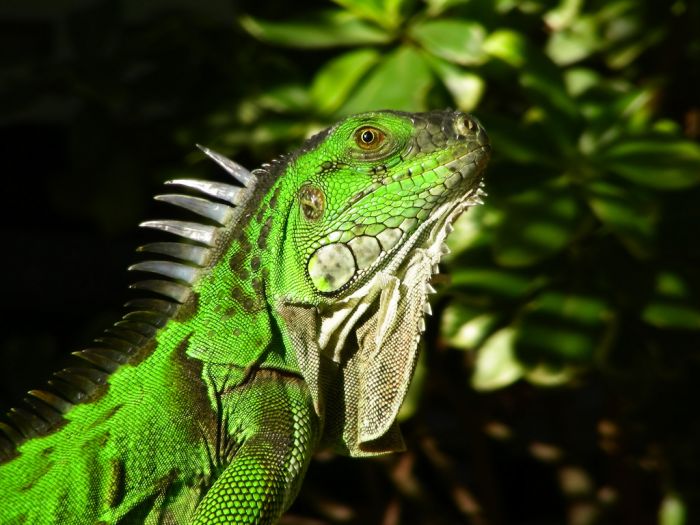Iguana is one of the reptiles that can undergo tail regeneration after experiencing autotomy. In laymen term, it grows back after your iguana lost its tail. The tail is lost when tail breaks out partly or completely, when iguana is chased or captured by the prey.
As with lizards, iguana, when found in danger, can sacrifice its tail. The loose tail section will move for a moment to attract the prey’s attention while the lizard runs away. Abruption of the tail occurs at certain places along the tail, strategically made to be weaker.
“Ok, but in my home iguana doesn’t have enemies, so why would it lose tail anyway?”
Well, it can happen anyway – iguana could make a hard hit on wall in your home, or cage, if it’s too narrow (remember the iguana growth chart and appropriate cage sizes). Accidents like – stepping on your ig’s tail, or shutting the door while iguana’s tail is there, happen too often.
“How do I treat my iguana after tail break?”
First of all, blood loss in these cases is usually minimal, especially if the tail broke near the end. You can apply styptic powder to stop bleeding, and use Povidone-iodine to clean the powder afterwards (alternatives are Betadine or some reptile-specific solution, although the latter is a bit more expensive.) Contact the veterinarian in cases of more severe tail damage – when tail broke higher, or the skin didn’t fall off together with the tail. This can all cause an infection in which case (professional) person should perform the amputation of the additional part of the tail.
After the tail autotomy, the regeneration process will begin and the new tail grows to the size and shapes almost as same as the original tail but the anatomical structure, especially vertebrae would differ.
The regeneration process is divided into 3 phases:
- wound healing phase,
- blastema phase and
- differentiation phase and growth of tail.
After the tail is amputated, the wound surface is filled by the tissues and cells proximal to the wound. Skin epithelial cells perform an ameboid movement, extending into the wound surface to close the wound.
After the wound closure, the tissue at the end of the broken end has partial disintegration. Muscle, bone, cartilage cells lose their distinctive mark. At that time the cells of all tissues resemble the embryonic cells.
These cells migrate towards the tip of the tail and proliferate so that the body is blastema. Then it will undergo differentiation into similar cells as before but it would be still different.
So, the question is – how long does it take for a new tail to grow up in full? Well, it can range from 2 months to one year, depending of the age of iguana (younger iguanas’ tails regrow faster and better). Off course, one factor is how much of the tail is lost in the first place. Unfortunately, the new tail won’t be exactly the same as the old one – color variations are common, it will probably be shorter with rounded tip, often with visible crook on the place of the injury.
Finally – does it hurt when lizards lose their tails?
As we have already mentioned, the tail of a reptile breaks at a place that is naturally made as a weak point (this is also called a “fracture plane”). At the moment of trauma, the muscles along the “fracture plane” separate, and the tail falls off with minimal blood loss. In the end, what would be the purpose of this defense mechanism if the price was a great loss of blood and possible death?
Does this hurt the iguana? Possibly (I haven’t come across any research on this topic and iguanas simply won’t tell) but that pain is probably less than the pain that would come from an injury on some “regular” part of the body. Realistically, if you were an iguana and had just lost your tail but saved your life, you would probably be happy, right?


